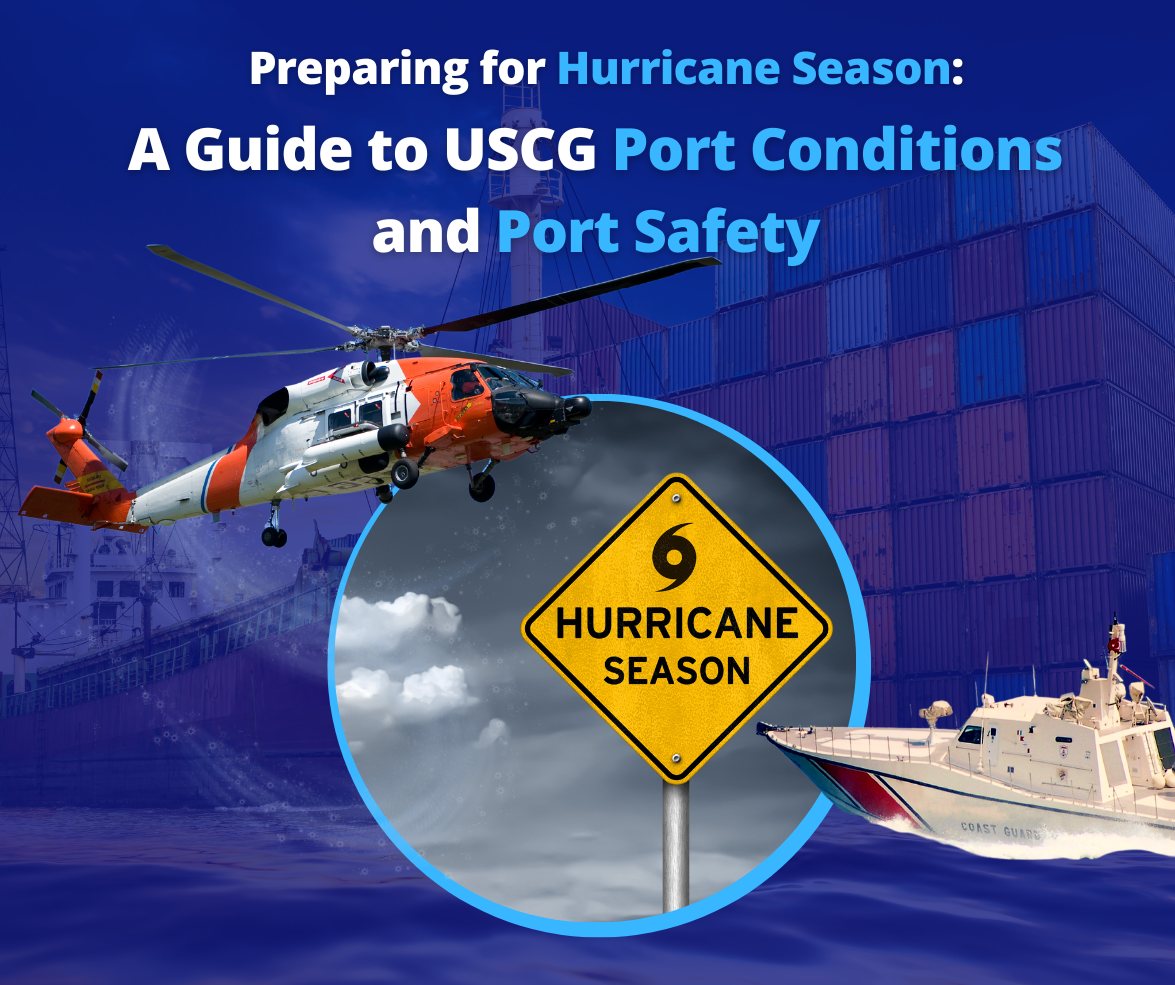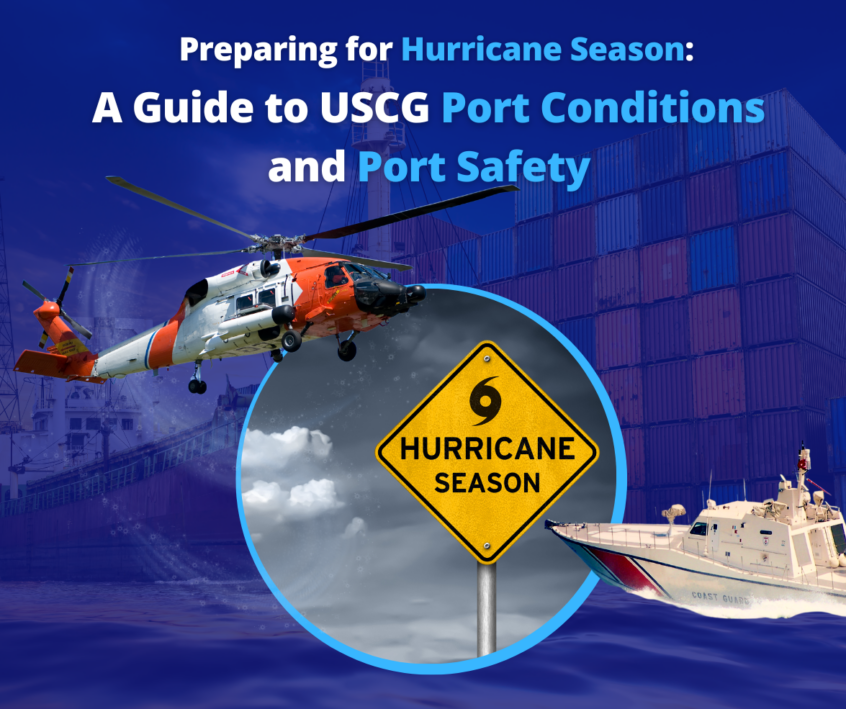
As hurricane season approaches, it’s essential to equip ourselves with the knowledge to navigate the challenges that lie ahead. With Miami’s coastal location and the added factor of this year being an El Niño year, the need for preparedness and understanding becomes even more crucial.
In our latest article, we delve into the specifics and implications of the US Coast Guard (USCG) terms on port conditions, providing invaluable insights for all stakeholders involved in port operations. By grasping the significance of these terms, we can save valuable resources, minimize risks, and ensure the safety of all who utilize port facilities in the USA.
USCG terms on port conditions explained
Understanding the specifics and implications of the US Coast Guard (USCG) terms on port conditions can help save on resources, such as money and time. It can also reduce the risk of acute injury and losses from all parties that use port facilities in the USA. These terms explain how port conditions are determined by weather characteristics. This ultimately impacts how and when the port is used. For example, such knowledge can be critical when devising a response plan for tropical weather conditions that can be very disruptive.
A basic code that tells visitors about what to expect at the ports
In some ways, the USCG terms are a series of codes that insiders and users must interpret in specific ways. Those who do not know or understand the language can get confused by the different terms utilized. Here is a breakdown of some of the common and important keywords:
- Whiskey: This term describes conditions in which gale force winds are anticipated at the specific port within the next four days or 72 hours. Despite these expected upheavals, the port will remain open to all commercial traffic. Nevertheless, barges and ships that intend to go out to the ocean must report their decision to depart or remain in the port. Those that have opted to depart must do so within 12 hours of the gale-force winds.
- X-Ray: This indicates whether gale force winds are expected within 2 days or 48 hours. The same conditions as the ones used for whiskey above will apply.
- Yankee: This indicates an expectation of gale force winds within 2 days. Those vessels that intend to depart must arrange for it immediately. Moreover, there is a requirement that cargo operations must cease once the vessel is within the range of 18-kilometer per hour (kph) winds. This term also requires that when there are 22 kph winds, all transfer hoses are disconnected. Moreover, any ships that wish to arrive at the port should seek an alternate destination.
- Zulu: This term implies gale force winds will occur within the next 12 hours. The upshot is that the port is closed to incoming or outgoing traffic.
Dealing with tropical weather
One of the most significant and impactful risks when using ports in inclement weather is the incidence of tropical weather. In those circumstances, USCG has set out certain possibilities that can rescue the situation:
- There should be an appropriate review of the facility’s heavy weather plan to implement updates as and when necessary.
- It is appropriate to search for, identify, and commandeer any berths that are suitable to hold vessels during inclement weather, such as a hurricane.
- Every member of the team and operational unit should engage in essential housekeeping to ensure that they are ready for the reopening and to avoid wasting human resources waiting for the storm to go away.
- At this time, it is essential to engage in pre-storm and post-security assessments and design interventions or mitigation mechanisms to ensure the port business’s safe and efficient management.
- This is when the heavy weather plan for the facility needs to be reviewed in terms of its ability to respond to crises and then updated to allow for any improvements resulting from the present crises.
The risk factors to consider during inclement weather
Certain risk factors are exacerbated during inclement weather and must therefore be considered. One of these is HAZMAT, an abbreviation for “hazardous materials.” These comprise substances currently in quantities or forms that may pose a reasonable risk to health and/or property as well as the environment. It is also important to consider the risk of missile hazards. Businesses should think about their berthing requirements and the modalities of container stacking. Such risks arise out of inclement weather, or they are made worse by the existence of that weather.
Vessels must take preventive or responsive action to minimize the damage caused by inclement weather at the ports. Some of the key measures that are typically considered include:
- Ensure the safety of vessel crew, who may understandably be put at risk by the weather factors
- Planning to avoid the storm as much as is practically possible
- Informing the coast guard and delegated authorities about circumstances that are anticipated or which have arisen
- Ensure that a mooring plan is submitted to the correct authorities in the right time frames
In undertaking all these measures, there is recognition that health and safety are not merely concerns of the regulatory authorities. The USCG provides these guidelines to ensure that any activity occurring during inclement weather does not damage future operations of the ports. Moreover, there is an element of personal and corporate safety as the skeleton staff tries to manage the situation.
Why knowing the right terms is so important
The failure to understand and apply these terms can be catastrophic for all vessels and companies that operate in a port. They are, in effect, signals of impending danger. Hence, they provide guidelines on how vessels and port personnel should prepare for those eventualities. Unfortunately, the warnings are not provided on a whim but based on accurate and up-to-date information. Failure to heed these warnings can be problematic for the entire port operation. The codes and phrases are like a language that warns people of imminent danger.
For these reasons, everyone participating in port activities should understand the terms. They are effective communication tools. Because they are well-established, the risk of being misunderstood or misunderstanding their meaning is limited. That is why USCG has helpfully prepared guidelines that can be authoritatively referenced.
Wrapping up
Overall, inclement weather remains one of those risks associated with the continued use of ports. USCG has developed a series of terms, such as Whisky, Zulu, Yankey, and X-ray, which are meant to communicate different risks and appropriate responses, to manage the risks and outcomes. This article has highlighted those terms and their significance. All this is done to help keep ports safer and functional.



